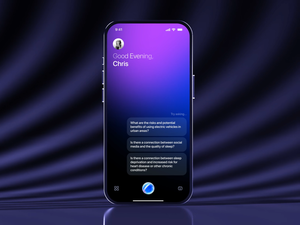Tips for Improving App Load Times and Performance
Corps
In today's fast-paced digital world, users expect mobile applications to be fast, responsive, and efficient. Slow load times can lead to frustration, poor user experience, and ultimately, a decline in app retention rates. Whether you are a web and app development company or an independent developer, optimizing app performance is crucial. This article explores key strategies for improving app load times and overall performance, incorporating best practices from mobile application development services and android app development services.
1. Optimize App Startup Time
The initial launch of an app is a critical moment for user retention. Here are some ways to improve startup speed:
-
Minimize Dependencies: Reduce the number of third-party libraries and dependencies loaded at startup.
-
Lazy Loading: Load only essential resources at startup and defer others until they are needed.
-
Optimize Code Execution: Remove unnecessary computations and streamline algorithms to reduce processing time.
-
Use Splash Screens Wisely: While splash screens can enhance branding, they should not delay app usability. Keep animations lightweight and efficient.
2. Reduce HTTP Requests and Optimize API Calls
Excessive HTTP requests and poorly structured API calls can slow down app performance. To address this:
-
Batch Requests: Combine multiple API requests into a single call to reduce network latency.
-
Use Caching: Store frequently used data on the device to minimize server requests.
-
Optimize Payload Size: Reduce the size of API responses by eliminating unnecessary fields and compressing data.
-
Implement GraphQL: Unlike REST APIs, GraphQL allows fetching only the required data, reducing the amount of transferred data.
3. Implement Efficient Data Caching Strategies
Caching significantly improves performance by storing frequently accessed data. Here’s how:
-
In-Memory Caching: Use memory caching to store temporary data for quick access.
-
Local Storage: Utilize databases like SQLite, Room (for Android), or Core Data (for iOS) to store data locally.
-
Service Workers for PWA: For web-based applications, use service workers to cache static assets and API responses.
4. Optimize Images and Multimedia
Heavy images and videos contribute to slow load times. Use the following methods to optimize multimedia:
-
Use Compressed Formats: Convert images to WebP or JPEG-XR formats for reduced file size without quality loss.
-
Adaptive Image Loading: Load images in different resolutions based on device screen size and network conditions.
-
Lazy Loading: Load images and videos only when they appear on the screen.
-
Use CDN (Content Delivery Network): Serve multimedia files from a CDN to reduce latency and improve delivery speed.
5. Implement Efficient Database Management
Poor database management can slow down data retrieval and app performance. Follow these best practices:
-
Index Database Queries: Use indexing to speed up data searches and retrieval.
-
Limit Data Fetching: Retrieve only necessary data instead of pulling entire tables.
-
Optimize ORM (Object-Relational Mapping): Avoid inefficient ORM queries that may slow down performance.
-
Regular Database Maintenance: Perform clean-ups to remove unnecessary data and optimize queries.
6. Optimize JavaScript and CSS for Web and Hybrid Apps
For web and hybrid applications, front-end optimization plays a crucial role:
-
Minify JavaScript and CSS: Remove unnecessary characters and spaces to reduce file size.
-
Reduce Render-Blocking Resources: Eliminate unnecessary JavaScript execution on page load.
-
Use Asynchronous Loading: Load JavaScript asynchronously to prevent blocking other page elements.
-
Enable Gzip Compression: Compress resources to reduce the amount of data transmitted.
7. Enhance Background Processes and Threading
Efficient background processing ensures smooth app performance. Implement these techniques:
-
Use WorkManager (Android) or BackgroundTasks (iOS): Schedule non-urgent background tasks efficiently.
-
Threading & Multithreading: Utilize background threads to offload heavy tasks from the main UI thread.
-
Push Notifications Wisely: Avoid excessive notifications that wake up the app unnecessarily, consuming resources.
8. Optimize Network Performance
Network latency can be a bottleneck for mobile applications. Improve it with these strategies:
-
Use Connection Pooling: Reuse existing connections instead of creating new ones for each request.
-
Implement WebSockets: Reduce network overhead by using persistent connections for real-time updates.
-
Reduce DNS Lookups: Cache DNS resolutions to speed up connections.
9. Leverage Performance Monitoring Tools
Utilizing performance monitoring tools helps identify bottlenecks and optimize accordingly:
-
Firebase Performance Monitoring: For Android and iOS applications, Firebase provides real-time insights into app performance.
-
New Relic: A powerful tool for monitoring app performance and tracking slow API responses.
-
Google Lighthouse: Helps analyze and optimize web app performance.
10. Optimize Code and Reduce Memory Leaks
Clean, efficient code is key to better performance. Follow these tips:
-
Avoid Memory Leaks: Use weak references where necessary and release objects no longer in use.
-
Optimize Loops and Conditions: Refactor inefficient loops and redundant conditions.
-
Use Efficient Data Structures: Choose appropriate data structures to minimize memory consumption.
Conclusion
Improving app load times and performance is essential for user retention and satisfaction. By implementing efficient caching, optimizing API calls, compressing multimedia, and monitoring performance, developers can create faster, more reliable applications. Whether you are a web and app development company, offering mobile application development services, or specializing in android app development services, these best practices will help enhance user experience and overall app efficiency.













commentaires